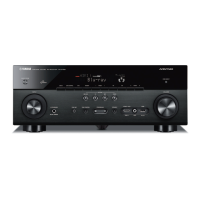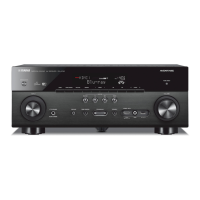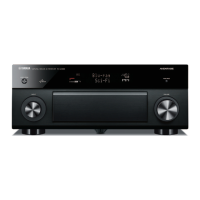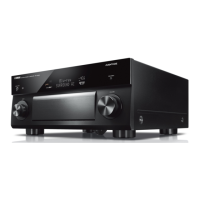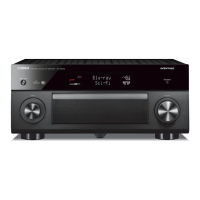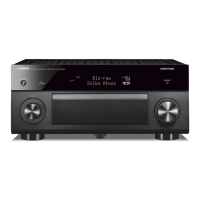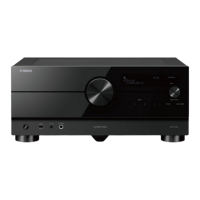Do you have a question about the Yamaha Aventage RX-A780 and is the answer not in the manual?
Guide on reading the manual, its structure, and conventions for understanding.
Verify all included accessories are present upon purchase to ensure all components are received.
Instructions for operating the unit with the remote control, including its effective range.
Overview of the unit's capabilities, including speaker system support and network content playback.
Detailed guide for connecting various speaker types and subwoofers to the unit.
Instructions for establishing an HDMI connection with a television for audio and video.
Guide to connecting video and audio playback devices via HDMI or other connections.
Steps for connecting the unit to wired or wireless network environments.
Manual configuration of speaker settings before automatic optimization (YPAO).
Guide to selecting and using various sound modes and field effects for enhanced audio.
Instructions for experiencing immersive audio with Dolby Atmos and DTS:X content.
Setup and operation for multi-zone audio playback, including Zone2 connections.
Fundamental steps for playing back audio and video content from connected devices.
Instructions for wirelessly playing music from Bluetooth-enabled devices.
Guide to streaming music from Apple devices using AirPlay.
Steps for playing audio files directly from a connected USB storage device.
Customizable one-touch settings for input, sound mode, and other parameters.
Registering and recalling favorite content quickly using shortcut numbers.
Procedure for accessing and navigating the Option menu for playback adjustments.
Overview of navigating and operating the main Setup menu for system configuration.
Detailed settings for speaker configuration, including size, placement, and type.
Enables or disables the Lipsync adjustment for audio-video synchronization.
Enables or disables video signal processing for resolution and aspect ratio adjustments.
Selects the method for connecting the unit to a network, either wired or wireless.
Enables or disables the Bluetooth function for wireless device connectivity.
Enables or disables volume adjustments for the Zone2 audio output.
Allows selection of the desired language for the on-screen menu interface.
Procedure for accessing and navigating the ADVANCED SETUP menu.
General guide to initial checks and troubleshooting steps for common issues.
Specific troubleshooting for power, system, and remote control related problems.
Guide to choosing a wireless connection method based on network environment.
Description of HDMI, Component Video, and standard Video jacks for signal transmission.
Details on Optical, Coaxial, and Analog Audio jacks for digital and analog signal transmission.
Describes the three available layout patterns for presence speakers.
Definitions of audio decoding formats and related technical terms.
Information on Bluetooth devices compatible with the unit.
| Channels | 7.2 |
|---|---|
| HDMI Inputs | 7 |
| HDMI Outputs | 2 |
| HDMI Version | 2.1 |
| HDMI eARC | Yes |
| HDMI CEC | Yes |
| HDR Support | HDR10, Dolby Vision, HLG |
| Network Connectivity | Wi-Fi, Ethernet |
| USB Input | Yes |
| Phono Input | Yes |
| Zone 2 Audio Output | Yes |
| Rated Output Power (1kHz, 1ch driven) | 160 W (4 ohms, 0.9% THD) |
| Maximum Effective Output Power (1kHz, 1ch driven) | 160W (8 ohms, 1kHz, 10% THD) |
| Dynamic Power per Channel (8/6/4/2 ohms) | 130 / 160 / 200 / 240 W |
| Audio Formats Supported | Dolby Atmos, DTS:X, DTS-HD Master Audio, Dolby TrueHD |
| Streaming Services | Spotify, Pandora, Tidal |
| Room Calibration | YPAO |
| Bluetooth | Yes |
